Present day, thanks to technological advances, organisations are increasing their online exposure more and more, which makes the need for effective communications through social media even more important. Even though relationship management with the public is still an essential part of a PR practitioner’s job, the context in which this management is performed, has fundamentally changed.
 PR practitioners and (cultural) organisations need to be aware that the more people they reach online, the more likely it is that they will lose control over their messages. Because everything on the web is so readily available, anybody can (in theory) adapt information and messages posted online. This means that anybody can become a (re) creator of content.
PR practitioners and (cultural) organisations need to be aware that the more people they reach online, the more likely it is that they will lose control over their messages. Because everything on the web is so readily available, anybody can (in theory) adapt information and messages posted online. This means that anybody can become a (re) creator of content.
And if we take into account that all this content is visible by anybody, anywhere, anytime, it becomes clear that managing our online footprint is utterly important for PR practitioners and (cultural) organisations alike.
Since anybody can become a content creator, everybody can also become an influencer. This might not seem as a big deal to cultural organisations, but when unhappy museum visitors turn to social media to vent their frustrations, it can have a snowball effect which leads to much bigger issues, for example if the onsite experience is not felt to be equal to the online one. It would be just as bad if a message send out by a (cultural) organisation would be changed or distorted, and then spread on the web, while reaching an audience that’s unaware of the incorrect content of this message. Clearly, because there are so many influencers and content adapters/creators, and because there is such an abundance of data information available online, it has become hard for publics to find the correct and valid informational content that they require. This is where curators come in.
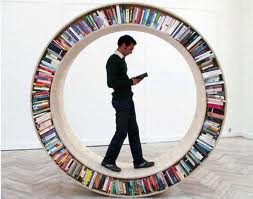 Curators are individuals who find, group, share and archive digital information with the aim of categorising content. They provide quick and easily accessible information for today’s time precious audience, while using a broader context to define ideas. This means that curators take already amplified ideas and either validate them, question the assumptions, challenge the ideas, research the references or start a new conversation or debate around these ideas.
Curators are individuals who find, group, share and archive digital information with the aim of categorising content. They provide quick and easily accessible information for today’s time precious audience, while using a broader context to define ideas. This means that curators take already amplified ideas and either validate them, question the assumptions, challenge the ideas, research the references or start a new conversation or debate around these ideas.
The information used by curators becomes a reusable artefact. A reusable artefact is a source of information which is used to give users access to information and to educate, inform and guide an audience about a particular topic. Even though curators may slightly edit this information, they are also contributing to the preservation of online content and contributing to the quality and control of collected online information.
 In a sense, online web curators are not so different from museum or digital curators. Museum curators are responsible for the supervision of the different phases of the preservation process for different types of carriers. By researching, conserving and restoring these carriers of information and the content on them, their message is preserved for present and future generations.
In a sense, online web curators are not so different from museum or digital curators. Museum curators are responsible for the supervision of the different phases of the preservation process for different types of carriers. By researching, conserving and restoring these carriers of information and the content on them, their message is preserved for present and future generations.
Digital curation on the other hand, involves a stewardship that provides for the reproducibility and re-use of authentic digital data. It also involves: the selection and appraisal by creators and archivists of the information; providing trustworthy and durable digital storage repositories and resources for long-term data preservation; the promotion of information and managing and providing intellectual access to the information. In summary, it’s about maintaining and adding value to a trusted body of digital information for current and future use, by transparently and within a certain context editing the original message, which always has to happen with respect for the unicity and authenticity of the original data.
Of course, in a way, transparency in the editing process is sometimes more of an enforced religion then a conscious choice, sort of speak. Since everyone can become a curator and influencer, this has truly become the age of vox populi. The public demands transparency and openness, and if their wishes are not heard, or the rules of online preservation platforms are not respected, then retribution and exposure is sure to follow. In a way this makes curators and commentators the guardians of the new transparency. They check (also each other’s) content, and make sure that their demands for two-way communication, transparency, trust and accountability are heard and followed.
It’s in this same context that PR practitioners are slowly becoming a sort of curators themselves. As curators, they search the web, looking for anything that might indicate that their messages or their organisation’s messages have been distorted, misread or misused. They research how conversations are shaped, and try to be transparent in steering these conversations towards positive reflections of the companies they work for. They might also try to influence behaviours by creating content of their own, again as transparently as possible and in a way that would benefit the messages they send out. On the other hand, PR practitioners can search through data and information from different sources and select the most interesting and relevant ones. By strategically monitoring their online footprint, PR practitioners and (cultural) organisations can have a better view of what publics want and need, which provides them with a competitive advantage. Furthermore, by actively engaging with the public, a whole new level of transparency and openness can be achieved between (cultural) organisations and visitors or between PR practitioners and the public.

Personally I think that cultural organisations should put a greater emphasis on making content/information, generated by and around their organisation, accessible and open, while also ensuring that this information is presented and ordered in a structured way at a central ‘hub’ or ‘community/network’ online. By then providing ways for users and visitors to have two-way conversations with the organisation, the cultural industry is giving users clear opportunities for participation, which creates a coherent experience for these visitors. Furthermore, because all the content is transparently curated by the ‘original source’, the cultural organisations’ messages will be trusted (if they remain credible, consistent and if possible, objective). After all, crowd sourcing and curation is important, but the primary source still remains the most trusted one and surely adds value, as it still is the source with ‘expert’ knowledge of a subject, though it might not always be totally impartial.
Cultural organisations can, by orderly governancing content contributions, improve their reputation and subsequently create relationships based on trust and credibility, which can result in further resonance and influence, which builds social capital.
This, in turn, articulates the ways in which strategic content management as well as relationship management is fundamental to not only effective Public Relations but also to cultural organisation.

 Slowly but gradually, it seems that a lot of cultural and not-for profit organisations are starting to use social media. However, some recent technological advancements could provide museums and other institutions with even more innovative ways to attract audiences and increase public participation and interactivity.
Slowly but gradually, it seems that a lot of cultural and not-for profit organisations are starting to use social media. However, some recent technological advancements could provide museums and other institutions with even more innovative ways to attract audiences and increase public participation and interactivity.


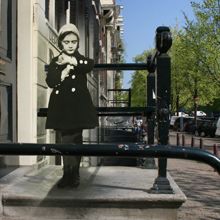 Recently, the Anne Frank Organisation launched the smartphone app “
Recently, the Anne Frank Organisation launched the smartphone app “
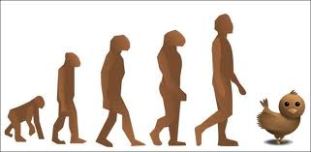
 As mentioned in an earlier blog post, the cultural sector still feels a bit uncomfortable using PR and social media, partly because they fear it might diminish a personal level of customer service, cause alienation, or result in a waning of the cultural offer and knowledge, making the cultural industry profit-orientated and therefore selling out the integrity and autonomy of the sector by giving the public to much influence on the displayed art. It is indeed hard to reach a diversified broad audience, while also keeping the public focused on, for example, the identity of a museum. However, social media should be seen as a tool that paints an online picture of a museum, while ensuring that the virtual and the real world both receive cohesive messages that reach the museum’s publics. Therefore, social media is not to be feared, but embraced.
As mentioned in an earlier blog post, the cultural sector still feels a bit uncomfortable using PR and social media, partly because they fear it might diminish a personal level of customer service, cause alienation, or result in a waning of the cultural offer and knowledge, making the cultural industry profit-orientated and therefore selling out the integrity and autonomy of the sector by giving the public to much influence on the displayed art. It is indeed hard to reach a diversified broad audience, while also keeping the public focused on, for example, the identity of a museum. However, social media should be seen as a tool that paints an online picture of a museum, while ensuring that the virtual and the real world both receive cohesive messages that reach the museum’s publics. Therefore, social media is not to be feared, but embraced. After exploring these innovative ways in which museums and not-for profit organisations have adopted social media techniques and used them for their own goals, I believe that the cultural sector is slowly beginning to embrace social media, and starting to wield it in an appropriate manner. Of course, there are much more possibilities that the cultural sector needs to explore. Facebook, Twitter, Blogs, and QR codes are only the tip of the Iceberg (no pun intended). Wiki’s are also a great method of sharing information and comparing or expanding knowledge. Wikipedia hosts numerous projects to develop content, including
After exploring these innovative ways in which museums and not-for profit organisations have adopted social media techniques and used them for their own goals, I believe that the cultural sector is slowly beginning to embrace social media, and starting to wield it in an appropriate manner. Of course, there are much more possibilities that the cultural sector needs to explore. Facebook, Twitter, Blogs, and QR codes are only the tip of the Iceberg (no pun intended). Wiki’s are also a great method of sharing information and comparing or expanding knowledge. Wikipedia hosts numerous projects to develop content, including  The technological and digital divide between generations in visitors and between museum technologists, public relations practitioners and curators need to be bridged. Stereotypes and prejudices need to be conquered and interdisciplinarity and cross-industry interaction is required. I’m not saying that the mission or vision of cultural institutions need to be changed, far from it, only the way the messages and experiences are portrayed and presented needs to change and adapt to current up-to-date technology and customer expectations. I understand that it seems as an impossible problem to make the visceral as relevant, dynamic and interesting as the virtual, while also keeping up-to-date with the latest social media tools. But, it’s definitely not impossible to translate our most innovative virtual activities into onsite experiences.
The technological and digital divide between generations in visitors and between museum technologists, public relations practitioners and curators need to be bridged. Stereotypes and prejudices need to be conquered and interdisciplinarity and cross-industry interaction is required. I’m not saying that the mission or vision of cultural institutions need to be changed, far from it, only the way the messages and experiences are portrayed and presented needs to change and adapt to current up-to-date technology and customer expectations. I understand that it seems as an impossible problem to make the visceral as relevant, dynamic and interesting as the virtual, while also keeping up-to-date with the latest social media tools. But, it’s definitely not impossible to translate our most innovative virtual activities into onsite experiences.
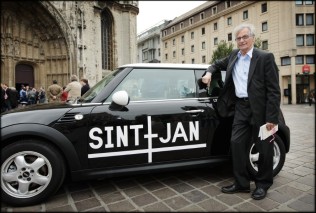
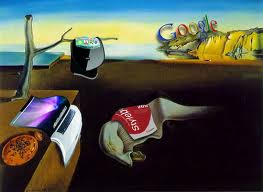 the cultural sector one of PR’s goals will be to increase public interest and attendance by creating a strategized PR campaign, which will include more than just determining an audience or using certain tools. The foundations for these PR campaigns will be trust and trustworthiness.
the cultural sector one of PR’s goals will be to increase public interest and attendance by creating a strategized PR campaign, which will include more than just determining an audience or using certain tools. The foundations for these PR campaigns will be trust and trustworthiness. In recent years, the internet has become an incredible source of information. Nowadays, it is hard to shift through all this readily available knowledge to find just the right answers which users are looking for. Subsequently,
In recent years, the internet has become an incredible source of information. Nowadays, it is hard to shift through all this readily available knowledge to find just the right answers which users are looking for. Subsequently,